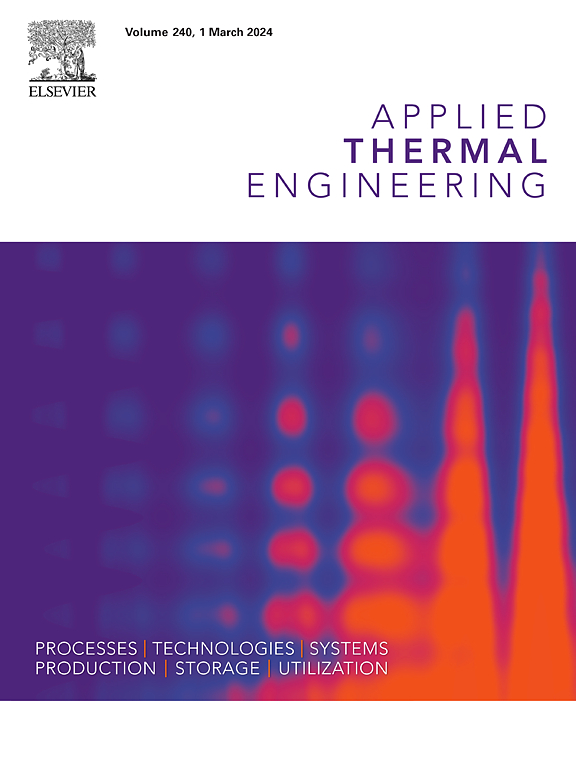Two-way coupled CFD-DEM model of a Disc-Shaped fluidized sorption reactor operating at low-pressure regimes
IF 6.1
2区 工程技术
Q2 ENERGY & FUELS
引用次数: 0
Abstract
The depletion of fossil fuels and increased greenhouse gas emissions are crucial factors forcing innovation in various branches of industry and life. In the 21st century, air conditioning is becoming a necessity for well-being and health. Therefore, adsorption cooling technology constitutes a very promising alternative to energy-consuming and environmentally hazardous vapour compression cooling. The main challenge in the wider popularization of adsorption technology lies in intensifying heat and mass transfer within the sorption reactor. Therefore, the paper presents different sorption reactor concepts proposed by the authors to solve the aforementioned issue. The main parameters influencing heat and mass transfer for each of the presented sorption reactor concepts were calculated using the computational fluid dynamics code adapted by the authors to capture the specific phenomenon occurring in the sorption reactor. The novelty presented in the paper is the application of a newly developed model that combines computational fluid dynamics and discrete element modelling to capture the specificity of the fluidized sorption reactor. The developed numerical model is validated against experimental data collected from the test stand dedicated to experimental research on innovative sorption reactors operating under various conditions. The presented results of numerical modelling using the developed approach, focusing on heat and momentum transfer during adsorbent particle fluidization within the sorption reactor under low-pressure regimes, are qualitatively coherent with experimental data, and their quantitative error does not exceed 0.98 °C (2.2 %) in the case of adsorbent temperature, 84 Pa (4.2 %) and 35 Pa (1.3 %) in the case of sorption chamber (upper tank) and evaporator (lower tank) pressure, respectively. The research allowed intensifying the heat and mass transfer in the sorption reactor and, in consequence, significantly contributed to the development and popularization of adsorption cooling technology and R&D in this area.
求助全文
约1分钟内获得全文
求助全文
来源期刊

Applied Thermal Engineering
工程技术-工程:机械
CiteScore
11.30
自引率
15.60%
发文量
1474
审稿时长
57 days
期刊介绍:
Applied Thermal Engineering disseminates novel research related to the design, development and demonstration of components, devices, equipment, technologies and systems involving thermal processes for the production, storage, utilization and conservation of energy, with a focus on engineering application.
The journal publishes high-quality and high-impact Original Research Articles, Review Articles, Short Communications and Letters to the Editor on cutting-edge innovations in research, and recent advances or issues of interest to the thermal engineering community.
 求助内容:
求助内容: 应助结果提醒方式:
应助结果提醒方式:


